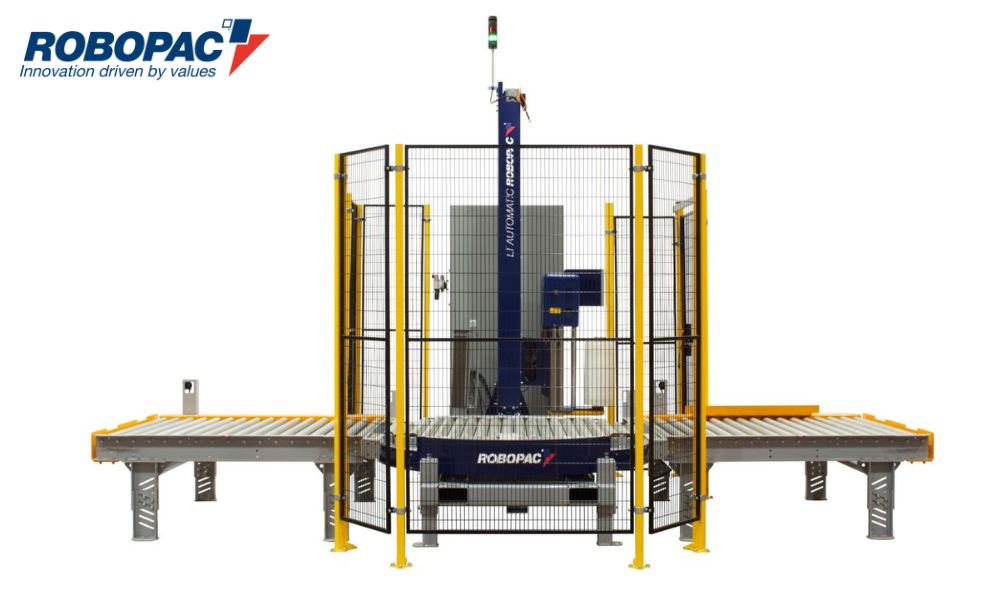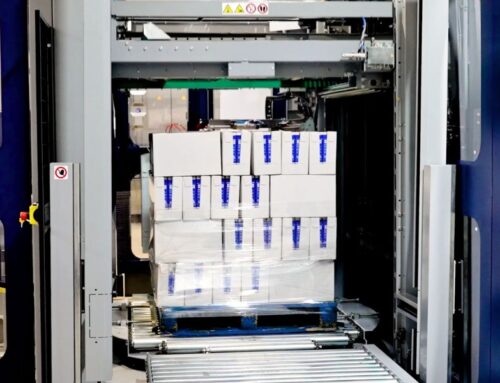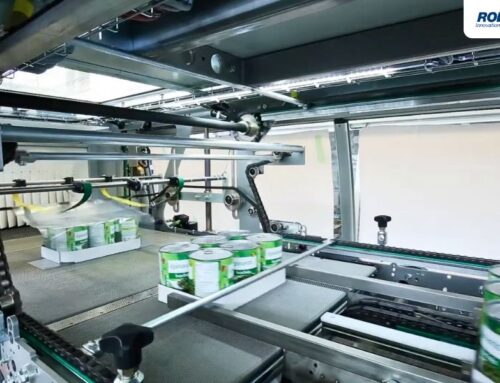Automatic pallet wrappers enhance productivity across various industries, including food processing and metal fabrication. These sophisticated machines deliver consistent wrapping results while reducing labor costs and material waste. However, even the most reliable equipment encounters occasional issues that can disrupt operations and impact your bottom line.
When working with automatic pallet wrappers, it’s helpful to know the typical problems they encounter to remedy these issues faster and prevent them from occurring again. Keep reading to learn how to troubleshoot common issues with automatic pallet wrappers.
Start With Basic System Checks
Before diving into complex diagnostics, perform essential preliminary checks, as these often resolve many common issues.
Power and Electrical Verification
Power-related problems account for a significant portion of service calls, yet operators often overlook these simple solutions in their urgency to restore operations. First, verify that your automatic pallet wrapper has sufficient power.
Next, confirm that connections are secure at the machine and the electrical panel. Industrial environments subject electrical connections to vibration and temperature fluctuations that can loosen terminals over time. Inspect the main power switch and emergency stop buttons to check that they’re in the proper operating position.
Visual Equipment Inspection
Conduct a thorough visual examination of your wrapping equipment. Look for obvious damage, loose components, or foreign objects that might interfere with operation. Film debris, damaged guards, or misaligned parts are common culprits. Also, check that all safety devices and photo eyes remain clean and unobstructed.
This initial assessment takes only minutes but can identify problems that would otherwise require extensive troubleshooting. Document unusual observations to identify patterns that might indicate developing maintenance needs.
Address Film Application Problems
Film breakage is one of the most common issues with automatic pallet wrappers. When film tears repeatedly, it disrupts production flow and wastes expensive stretch film materials. Multiple factors contribute to this problem, from the quality of the film itself to its storage and the machine’s tension settings.
Film Quality and Storage Factors
Poor film quality directly impacts wrapper performance. Low-grade stretch film lacks the tensile strength necessary for automatic applications, particularly when machines apply higher pre-stretch ratios.
Temperature affects film characteristics significantly, so its storage is important to its use. Cold film becomes brittle and tears easily, while excessively warm film may become too soft for proper handling. Store film rolls in temperature-controlled environments and allow them to acclimate to operating temperatures before use.
Tension and Mechanical Adjustments
Incorrect tension settings are a leading cause of film breakage. Excessive tension overstretches film, while insufficient tension results in loose wraps that compromise load stability. Modern automatic wrappers with precise tension control systems must be properly calibrated for different film types and load configurations.
Pre-stretch roller condition and film carriage alignment also prevent film issues. Damaged or dirty rollers create uneven tension and can tear film, while misaligned carriages cause binding and stress that lead to failure. Regular cleaning, inspection, and alignment checks lead to smooth film handling and application.
Resolve Wrapping Inconsistencies
Another common issue with automatic pallet wrappers that may require troubleshooting is wrapping inconsistencies. Uneven wrapping patterns compromise load stability and create an unprofessional package appearance. Consistent wrap application requires precise coordination between multiple machine systems, making this issue more complex to diagnose than simple mechanical failures.
Load Positioning and Centering
Proper load placement on the turntable forms the foundation for consistent wrapping. Off-center loads create varying distances between the film application point and package edges, resulting in loose areas and excessive film usage. Automatic wrappers rely on consistent geometry to deliver optimal results.
Some facilities benefit from installing load-positioning guides or automated centering systems for consistent placement. These accessories are particularly helpful in operations where multiple operators load machines or where product dimensions vary significantly.
Mechanical Component Wear
Turntable bearings and drive systems wear over time, creating variations in rotation speed that affect wrap consistency. Worn components may cause stuttering or uneven motion that translates directly to wrapping irregularities. Regular lubrication and bearing replacement maintain smooth operation.
Film carriage guide systems require periodic adjustment to compensate for wear. As guides develop play or binding, the film application point varies, creating inconsistent wrap patterns. Professional technicians can adjust these systems to restore original performance specifications.
Control System Calibration
Advanced automatic stretch wrap machines use sophisticated control systems that require periodic recalibration. Sensors that detect load height, film position, and wrapping progress can drift from their original settings, causing the machine to apply incorrect wrap patterns.
Many control panels offer diagnostic modes that display sensor readings, enabling technicians to verify proper operation. Refer to your machine’s manual for specific calibration procedures, as these vary between manufacturers and models.
Eliminate Unusual Operating Sounds
Automatic pallet wrappers should operate with consistent, predictable sound patterns. New or unusual noises indicate problems that can lead to major failure without intervention. Identifying different sound types and what they mean will help you prioritize maintenance actions.
Mechanical Noise Sources
Bearing failures produce grinding or squealing sounds that worsen over time, requiring immediate attention to prevent further damage. Components such as turntable bearings, film carriage parts, and motor assemblies rely on bearings that require regular inspection to avoid catastrophic failures.
Chain and belt drive systems can create rattling or slapping noises when loose or worn, which require proper tension adjustments or component replacement, depending on the severity of the issue.
Lubrication Requirements
Inadequate lubrication causes friction that produces squeaking, grinding, or binding sounds. Automatic wrappers require regular lubrication of numerous points, including bearings, chains, guides, and pivot points. Follow manufacturer specifications for lubricant types and application intervals.
Resolve Operational Control Issues
Control system problems range from simple parameter adjustments to complex electronic failures. Modern automatic wrappers incorporate sophisticated programmable controllers that manage multiple functions simultaneously, making systematic troubleshooting essential.
Control Panel Diagnostics
Most control panels on automatic stretch wrappers provide error codes that allow you to troubleshoot issues using your machine manual or contact your machine manufacturer for technical support. These diagnostic systems identify specific problems and guide repair procedures.
Sensor System Maintenance
Photo eyes and proximity sensors detect load presence, film position, and safety conditions. These devices require regular cleaning to maintain proper operation, as dust and debris can cause false readings that disrupt automatic operation. Sensor alignment becomes critical after machine relocation or major maintenance. Misaligned sensors may fail to detect loads properly or create unsafe operating conditions.
Safety System Verification
Safety circuits protect operators and equipment from hazardous conditions. These systems may prevent machine operation if they detect unsafe conditions, even when the primary cause seems unrelated. Test all emergency stops, safety gates, and protective devices for proper operation.
Maximize Equipment Performance With Robopac USA
Automatic pallet wrappers are valuable investments that boost efficiency and reduce labor costs. Understanding common issues, regular upkeep, and systematic troubleshooting can minimize downtime and extend equipment life.
When problems exceed your expertise, qualified service technicians, like those from Robopac USA, can provide fast, professional support. Discover more about our automatic wrappers and learn why we make an excellent service partner.








